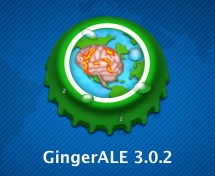Context
Aging: Aging is chosen as a context when two subject groups of different ages are compared (i.e., verbal fluency in adults and children). These can be two healthy groups who only differ in age, but can also be groups of subjects who share the same diagnosis and thus allow a closer look at the progression of diseases like Alzheimer’s marked by cognitive decline with age.
Disease: The context of disease is used for experiments which are attempting to isolate the effect of a physical or mental illness. This is achieved by investigating a patient group with a relevant diagnosis. This group can be studied in isolation, parsing out the heterogeneity of the disease, or in contrast to a group of healthy controls. If one of the subject groups used in an experiment have a diagnosis, then the context should probably include disease.
The term disease is used broadly, including developmental, genetic and acquired disorders of any etiology. For example:
- (Functional) A study looks at fibromyalgia patients and their brain activity when perceiving pain.
- (Structural) A researcher finds grey matter density reduction in women with anorexia nervosa.
Emotion: For experiments that use a paradigm with emotionally valenced stimuli, for example, a study that looked at subsequent memory of negative vs. positive pictures.
Experimental Design: Experimental Design is only for studies in which a technical aspect of the paradigm is being manipulated. For example, when comparing the effect of the rate of presentation of the stimuli (“Self-Paced n-back vs. Fixed-Paced n-back” or “Slow Words vs. Fast Words”).
Gender: Gender is a context chosen for experiments that focus on gender differences. An example would be mental rotation task performed male and female subjects. Subject groups are not required to be all male or alll female to qualify for this context. As long as the focus is on gender, it should be coded as such.
Genetic: For subject groups who have a condition that involves a genetic anomaly. Remember, most often times these are rare and while many diseases are associated with a genetic component, genetic disorders may/may not be heritable. Down syndrome, also called Trisomy 21, is one of the most common, non-inherited genetic syndromes.
Some examples are the following:
- A study which enrolls subjects with Monoamine oxidase (MAO-A) genetic variations and explores inhibitory control and areas associated with it.
- A study which examines the structure of older adults’ brains at genetic risk for Alzheimer’s disease.
Handedness: Handedness is a context chosen for experiments that focus on differences in handedness (i.e., left vs., right, dominant vs. non-dominant). For example Tzourio-Mazoyer's 1998 study that looked at speech comprehension in left-handers vs. right-handers.
Language: Language is an appropriate context selection when a study focuses on a particular language spoken; primary vs. secondary language; cross-linguistic or the comparison of different languages; or when subjects are multilingual. An example from Sleuth is the Klein’s (2001) cross-linguistic study that included Mandarin Chinese and English speakers and looked at tone perception.
Learning: Learning is often chosen as a context when studies focus on a specific learning pattern, e.g. learning a sequence, motor/visuomotor learning, sensory learning or when subjects undergo training for particular task. An example might be the following: a study investigates persons with Attention-deficit/hyperactivity disorder (ADHD) learn. In the contrast, brain activation and task performance of ADHD learners are compared before and after the training program.
Normal Mapping: Normal Mapping is appropriate when the experiment exclusively contrasts imaging data within exclusively healthy or normal subject groups. The context of normal mapping also excludes any subjects under the influence of drugs or undergoing any treatments. So normal mapping experiments should not be co-coded with disease, pharmacology or treatment. For experiments that have a borderline subject group that looks like it could use both normal mapping and one of these contexts, do not code it as normal mapping.
In some cases, normal mapping can be co-coded with other contexts. Children and elderly normals, non-native speakers, and groups of exclusively left-handed or female subjects, are all eligible to be considered Normal Mapping, provided they don't have another reason to be excluded.
Pharmacology: Pharmacology is an appropriate selection for context when a particular drug is administered before the patient is scanned or when a patient regularly adheres to a medication treatment regimen. Please note that "Pharmacology" should not be co-coded with Normal Mapping. Using this context requires the experiments appropriate Pharmacology Class to be defined in order to save the experiment in Scribe. An example from Sleuth, would be the following: After being administered either ketamine or a saline solution intravenously subjects were asked to perform a facial emotion recognition task (Abel, 2003)
Treatment: Treatment is selected as a context when activation differences are expected to be due to treatment or therapy given to the subjects. An example from the task database is the De Nil study where researchers looked at the short and long-term effects of a treatment for stutterers (De Nil, 2003). This context should not be co-coded with Normal Mapping.


